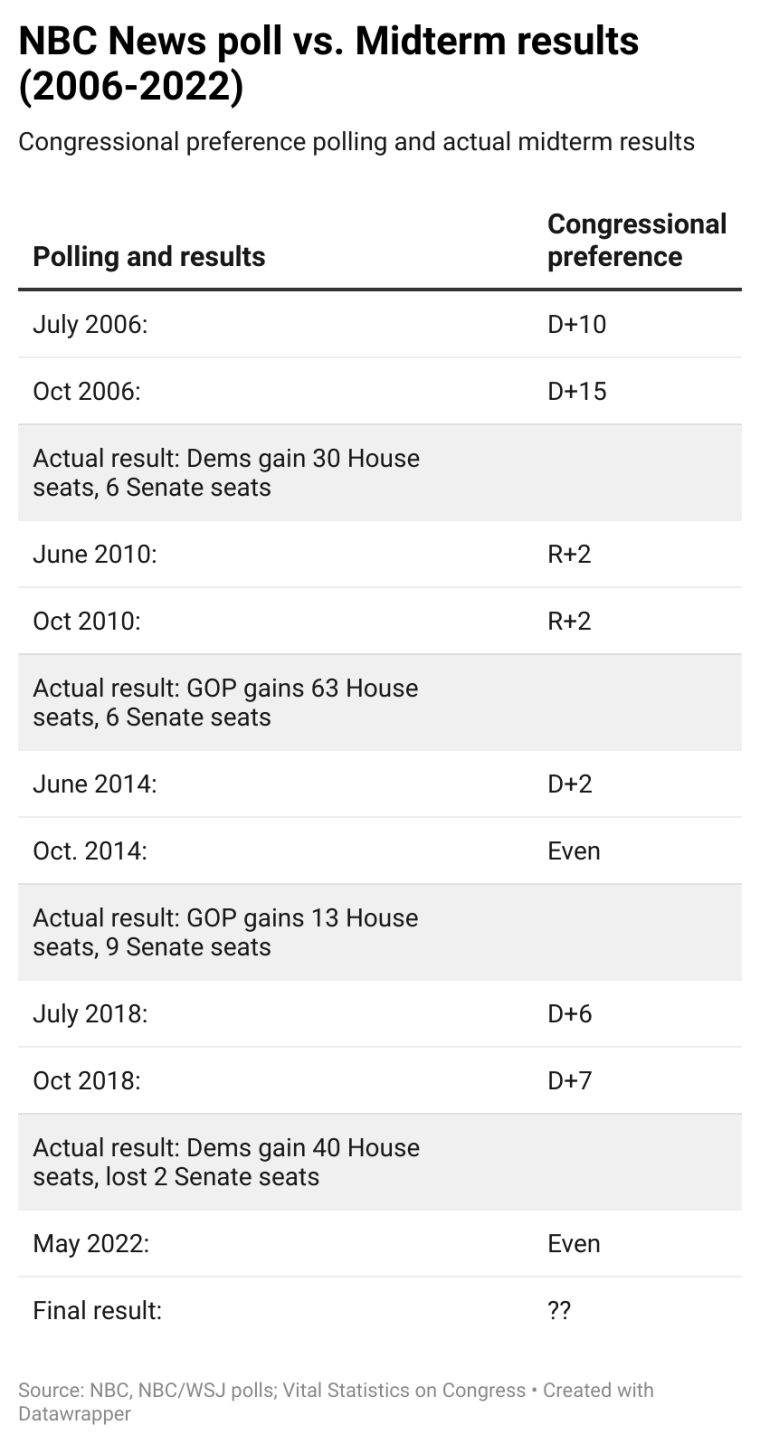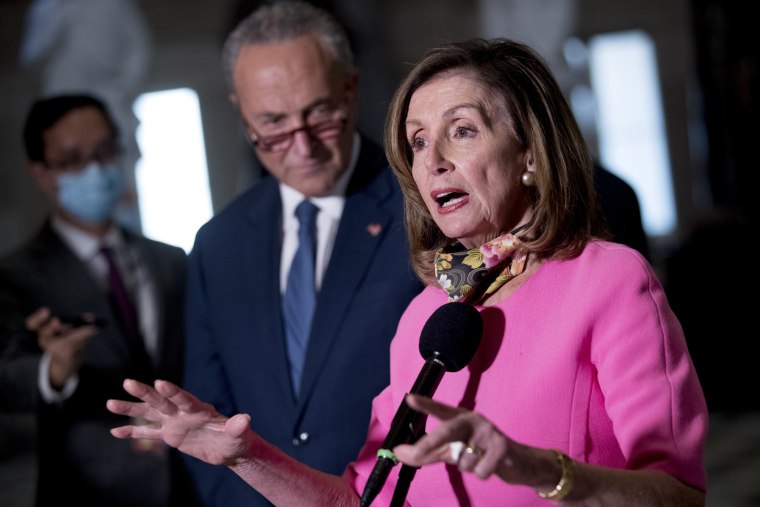The generic ballot numbers have been climbing for Democrats in polling over the past month.
Despite President Joe Biden’s approval rating in the 30s, a recent Quinnipiac poll found 45% of registered voters wanting Democrats to control the U.S. House of Representatives, versus 44% who want Republicans in charge — a shift from when Republicans held a 5-point advantage on this question in June, 46%-41%.
Additionally, the online Politico/Morning Consult poll has Democrats leading by 4 points, 45%-41% — after it was tied in June.
Other polls, including from Fox News, show Republicans with a slight lead.
So is the midterm environment looking better for Democrats?
Maybe, particularly when combined with recent Senate polling showing Democratic candidates ahead, as well as surveys showing Democratic enthusiasm increasing after the Supreme Court overturned Roe v. Wade .
But also maybe not — given that the generic ballot might not be the best measure in gauging what a midterm environment looks like.
Dave Wasserman, who monitors House races for the nonpartisan Cook Political Report with Amy Walter, says generic-ballot poll results have two flaws.
The first, he explains, is that they test a nationwide race — when midterm elections are fought congressional district by congressional district, and state contest by state contest.
“It gauges for an election that’s not held,” Wassermann says. This is especially problematic when Democratic voters tend to be clustered in large cities and other urban areas.
The second flaw is that the generic ballot has often overstated Democratic performance. “Historically, the generic ballot has favored Democrats more than the actual end result,” Wasserman adds.
In 2020, for instance, national polls — including NBC News’ — showed Democrats with a generic-ballot lead over Republicans, but the GOP ended up gaining more than 10 congressional seats that cycle.
Another example: Democrats have enjoyed excellent midterm cycles when their generic-ballot advantage has been in the double digits or close to it. But Republicans have been the midterm winners on generic-ballot scores below that threshold, even when Democrats have held a small lead.
Just look at these numbers from our NBC News poll when combined with the actual midterm results:

“R+2 or D+2 is not a good place to be for Democrats in our poll,” said Democratic pollster Jeff Horwitt, who co-conducts the NBC News poll with Republican pollster Bill McInturff.
Bottom line: Looking at the generic ballot — combined with other state polling and other surveys — can helpful in measuring a midterm’s political environment.
But by itself? It doesn’t tell the whole story.

